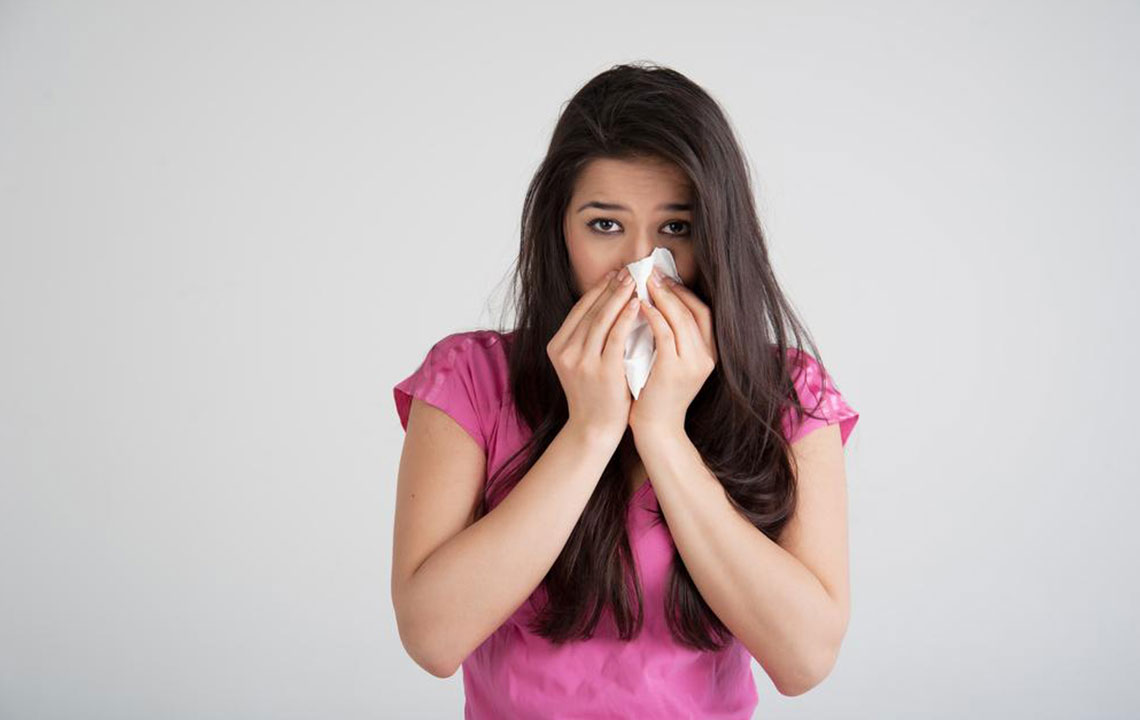6 Effective Home Remedies to Treat Post-Nasal Drip

When nasal mucosa produces mucus in excess, it causes PND or post-nasal drip. It is a common problem under such circumstances. All the glands in the lining of your throat, nose, and airways produce mucus continually. These glands work toward cleaning and moistening the nasal membranes, clears and traps inhaled foreign particles, humidifies the air in the airways, and fights with infections.
You do not realize its presence, but you swallow it unconsciously all through the day. However, when mucus production happens in abundance, it starts dripping from the back of your nose thereby causing post-nasal drip.
The symptoms of post-nasal drip include coughing, sore throat, congestion, feeling weak, and difficulty in swallowing. A lot of things can trigger post-nasal drip. These include flu, common cold, sinus infection, allergies, excessively dry air, cold temperature, medications, spicy food, hormonal changes, perfumes, chemical fumes, smoke, cleaning products, and other similar irritants.
You can treat most cases of post-nasal drip with home remedies. You would find all the ingredients in your kitchen to get rid of it. Following are certain ways of treating post-nasal drip:
Salt water gargle
The best way to relieve the uneasiness caused due to post-nasal drip is gargling with salt water. It thins out the mucus that lets you get rid of the same. It also flushes out the irritants from the nasal passages.
Process for this treatment option for post-nasal drip:
– Mix ½ teaspoon of salt and 1 cup of warm water together
– Keep stirring until the salt dissolves
– Gargle a couple of times daily with this solution for 2–3 days
Steam inhalation
You can use steam post-nasal drip treatment with or without essential oils to prevent the production of mucus in excess which causes post-nasal drip.
The process of steam inhalation:
– Boil water and transfer it to a bowl
– Add a few drops of essential oil if you have any
– Cover your head with a towel and hold your face over the bowl of hot water
– Inhale the steam deeply for around 10 minutes and then blow your nose
– Follow this process a couple of times till you completely recover
Taking a warm shower also helps in breaking up the mucus. Although this is a very effective treatment option for post-nasal drip, it, however, is not advisable for infants and small children.
Nasal irrigation
Nasal irrigation helps in cleaning the excess mucus. It keeps the nasal passage devoid of irritants as well. It also helps prevent infections.
The process for nasal irrigation as a treatment option for post-nasal drip:
– Mix ¼ teaspoon of salt, a pinch of baking soda, and one cup of warm distilled water together
– Fill up a neti pot with the mixture
– To make the solution get to your nasal cavities, move your head forward and backward and side-to-side
– Blow out your one nostril first pressing down the other to remove excess solution and mucus
– Repeat the same process with the other nostril
– Do this once every day and continue for a few days in a week afterward
Garlic
Garlic has strong antibiotic properties. It controls excessive production of mucus and keeps infections in check as well. It promotes a quick recovery of post-nasal drip.
Here’s how you can use garlic as a treatment option for post-nasal drip:
– Chop three to four cloves of garlic and roast them in one teaspoon of ghee or clarified butter for a minute. Consume it with lukewarm milk two times a day and continue for a few days
– You can also chew a clove of raw garlic a few times daily
– Consult a doctor to suggest you the most effective garlic supplement available in the market
Ginger
Ginger contains expectorant, antibacterial, and antiviral properties. It is a natural decongestant. Ginger aids in reducing the mucus production in excess and helps in its expulsion. It is a solution to relieve chest congestion, sore throat, hoarseness, and other common symptoms of post-nasal drip.
Here’s how you can use ginger as a treatment option for post-nasal drip:
– Consume ginger tea two to three times every day. Put 1 tbsp of sliced ginger in one to two cups of water. Simmer for 10 minutes on low heat. Strain the mixture, add raw honey and drink the concoction
– You can add ginger to your dishes when you cook
– Chew raw ginger slices throughout the day for several times
Cayenne pepper
Cayenne pepper works as an antihistamine and aids in the treatment of post-nasal drip. The capsaicin present in cayenne pepper works as a mucus-thinning agent to ease in discarding it. It soothes irritated throat as well.
Here’s how Cayenne pepper can be used for the treatment of post-nasal drip:
– Mix half a teaspoon of honey and cayenne pepper and take it twice or thrice daily and continue it for a few days
– You can also add a half teaspoon of cayenne pepper to one cup of lukewarm water and sip it slowly; you would need to do this a couple of times in a day
– Include this ingredient in your regular foods as well when you cook
If none of these remedies that are mentioned above provide you any relief even after one week of using them, it is advisable to consult a physician to find out any underlying cause behind the same.


